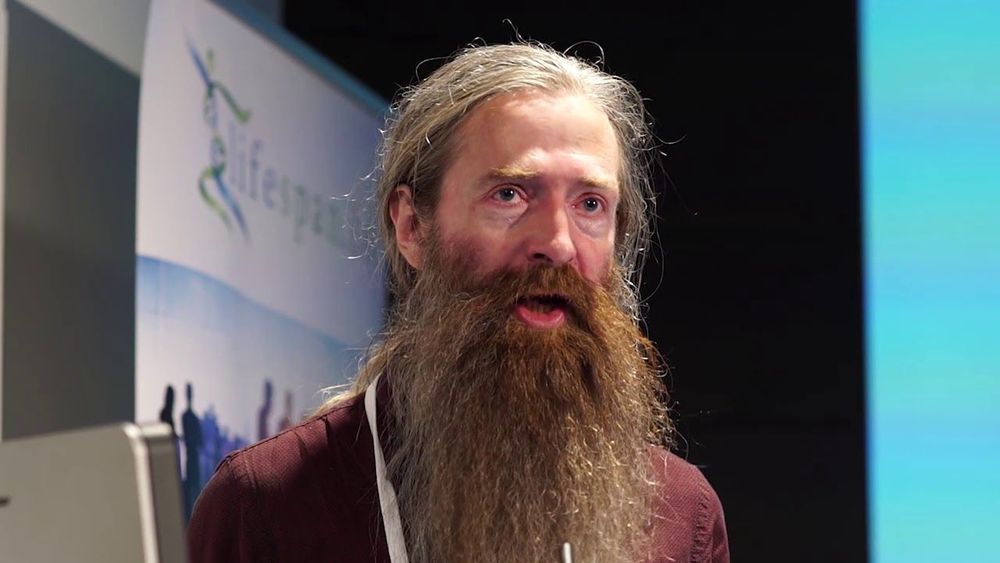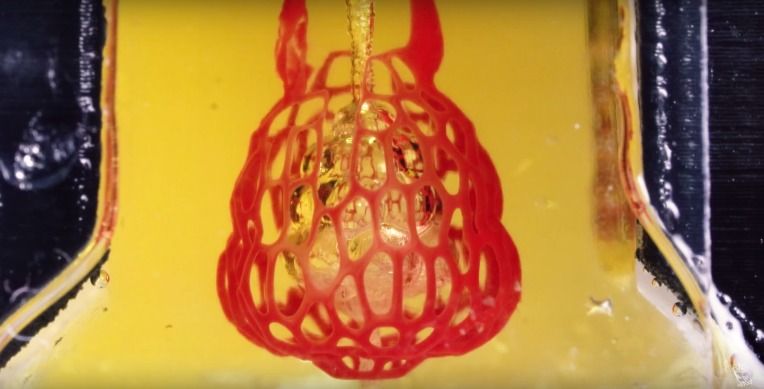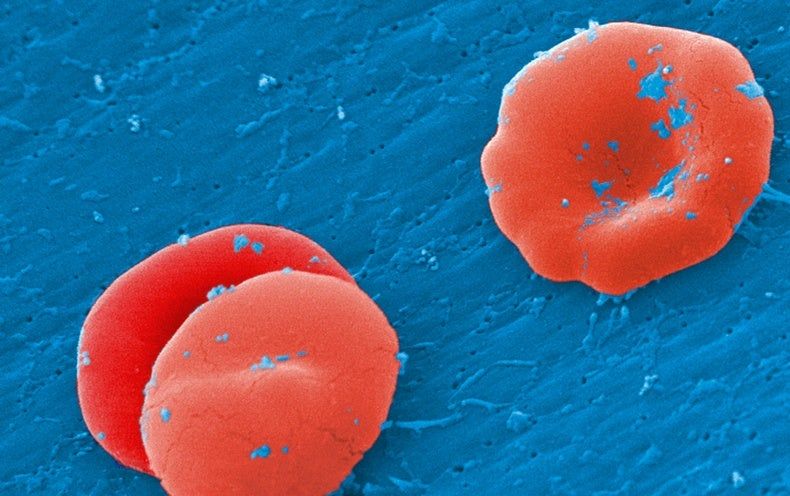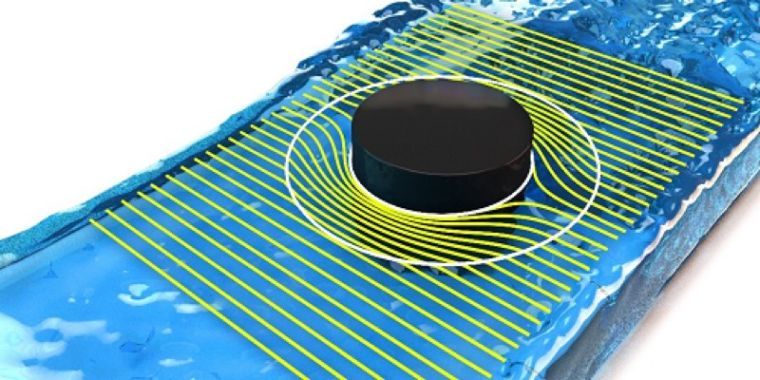NASA’s Curiosity rover has spotted multiple surges of methane in Mars’ air over the past few years — most recently in June, when levels of the gas inside the Red Planet’s Gale Crater spiked to 21 parts per billion per unit volume (ppbv).
Page 7564
Aug 14, 2019
How a one-time CRISPR shot could obliterate lower back pain
Posted by Genevieve Klien in category: biotech/medical
Today [August 13] the US National Academy of Sciences is hosting the first meeting of the International Commission on the Clinical Use of Human Germline Genome Editing in Washington, to discuss controversial applications of CRISPR to human eggs, sperm, or fertilized ova, in the wake of Chinese researcher He Jiankui announcing the birth of CRISPR twins after a similar meeting in 2017 (See Do China’s controversial CRISPR babies illustrate the need for an undo button?)
Although only one clinical trial is up-and-running for CRISPR to treat body cells, with an initial patient making the media rounds just last week to discuss her cells doctored to counter sickle cell disease, many other applications are in preclinical testing — animal models and human cells and organoids. And they’re not restricted to rare diseases.
Imagine a single injection that quells the inflammation behind lower back pain — perhaps forever. CRISPR may make that possible by dampening the immune system’s cytokine signals, according to a report in the July issue of Human Gene Therapy.
Aug 14, 2019
DARPA Subterranean Challenge: Tunnel Circuit Preview
Posted by Genevieve Klien in category: robotics/AI
 The Tunnel Circuit of the DARPA Subterranean Challenge starts later this week at the NIOSH research mine just outside of Pittsburgh, Pennsylvania. From 15–22 August, 11 teams will send robots into a mine that they’ve never seen before, with the goal of making maps and locating items. All DARPA SubT events involve tunnels of one sort or another, but in this case, the “Tunnel Circuit” refers to mines as opposed to urban underground areas or natural caves. This month’s challenge is the first of three discrete events leading up to a huge final event in August of 2021.
The Tunnel Circuit of the DARPA Subterranean Challenge starts later this week at the NIOSH research mine just outside of Pittsburgh, Pennsylvania. From 15–22 August, 11 teams will send robots into a mine that they’ve never seen before, with the goal of making maps and locating items. All DARPA SubT events involve tunnels of one sort or another, but in this case, the “Tunnel Circuit” refers to mines as opposed to urban underground areas or natural caves. This month’s challenge is the first of three discrete events leading up to a huge final event in August of 2021.
While the Tunnel Circuit competition will be closed to the public, and media are only allowed access for a single day (which we’ll be at, of course), DARPA has provided a substantial amount of information about what teams will be able to expect. We also have details from the SubT Integration Exercise, called STIX, which was a completely closed event that took place back in April. STIX was aimed at giving some teams (and DARPA) a chance to practice in a real tunnel environment.
For more general background on SubT, here are some articles to get you all caught up:
Aug 14, 2019
A Newfound Neuron Might Help Keep the Brain’s Cells in Sync
Posted by Genevieve Klien in categories: computing, neuroscience
A long-standing controversy in neuroscience centers on a simple question: How do neurons in the brain share information? Sure, it’s well-known that neurons are wired together by synapses and that when one of them fires, it sends an electrical signal to other neurons connected to it. But that simple model leaves a lot of unanswered questions—for example, where exactly in neurons’ firing is information stored? Resolving these questions could help us understand the physical nature of a thought.
Two theories attempt to explain how neurons encode information: the rate code model and the temporal code model. In the rate code model, the rate at which neurons fire is the key feature. Count the number of spikes in a certain time interval, and that number gives you the information. In the temporal code model, the relative timing between firings matters more—information is stored in the specific pattern of intervals between spikes, vaguely like Morse code. But the temporal code model faces a difficult question: If a gap is “longer” or “shorter,” it has to be longer or shorter relative to something. For the temporal code model to work, the brain needs to have a kind of metronome, a steady beat to allow the gaps between firings to hold meaning.
Every computer has an internal clock to synchronize its activities across different chips. If the temporal code model is right, the brain should have something similar. Some neuroscientists posit that the clock is in the gamma rhythm, a semiregular oscillation of brain waves. But it doesn’t stay consistent. It can speed up or slow down depending on what a person experiences, such as a bright light. Such a fickle clock didn’t seem like the full story for how neurons synchronize their signals, leading to ardent disagreements in the field about whether the gamma rhythm meant anything at all.
Aug 14, 2019
SpaceX’s Starhopper Prototype Is Ready for Its Biggest Hop Test
Posted by Genevieve Klien in categories: Elon Musk, space travel
SpaceX’s silver Starhopper prototype could complete its biggest hop test this weekend, according to SpaceX CEO Elon Musk.
Starhopper, which is an early prototype for SpaceX’s Starship spacecraft, has completed a couple of tests so far. According to Musk, the Starhopper’s next challenge will be to fly roughly 650 feet off the ground. Musk recently tweeted that the prototype’s next major hop could take place on Aug. 16, Aug. 17, or Aug. 18, as long as the U.S. Federal Aviation Administration (FAA) gives SpaceX permission to conduct the test flight.
Just spoke with FAA, so hopefully yes.
Aug 14, 2019
Despite Controversy, Human Studies of CRISPR Move Forward in the U.S.
Posted by Genevieve Klien in category: biotech/medical
The technology that produced a global scandal in China last year has entered into clinical trials to treat sickle cell anemia and an eye disease.
Aug 14, 2019
Aubrey de Grey at Ending Age-Related Diseases 2019
Posted by Steve Hill in categories: biotech/medical, life extension

Today, we’re releasing another keynote from Ending Age-Related Diseases 2019, our highly successful two-day conference that featured talks from leading researchers and investors, bringing them together to discuss the future of aging and rejuvenation biotechnology.
In his talk, Estimating the True Complexity of Comprehensive Rejuvenation, the famous Aubrey de Grey of SENS Research Foundation discussed the intricacies of creating a complete rejuvenation biotechnology framework, including the differing rates of age-related damage and the ramifications of the extensive crosstalk between different types of this damage.
Aug 14, 2019
Your Doorway to Japan
Posted by Klaus Baldauf in categories: policy, quantum physics, space
With the launch of its Quantum Science Satellite, nicknamed Mozi, China took the lead in implementing quantum-encoded communications. In the first article of a series about China’s ambitious space program, space policy expert Aoki Setsuko explains the significance of this development.
Aug 14, 2019
Novel “invisibility cloaks” for water waves leave no telltale wakes or drag
Posted by Quinn Sena in category: materials
Two separate teams of scientists have devised novel hydrodynamic “invisibility cloaks”—instead of shielding objects from light, the cloaks would shield them from fluid flows. The scientists described their work in two new papers in Physical Review Letters. These kinds of cloaking structures could one day help reduce drag on ships or submarines, or protect ships at a port or wharf from potential damage from strong waves.
Most so-called “invisibility cloaks” created thus far work in the electromagnetic regime and rely on metamaterials. A “metamaterial” is any material whose microscopic structure can bend light in ways light doesn’t normally bend—a property called “the index of refraction.” Natural materials have a positive index of refraction; certain manmade metamaterials—first synthesized in the lab in 2000—have a negative index of refraction, meaning they interact with light in such a way as to bend light around even very sharp angles.
Aug 14, 2019
3D-printing organs moves a few more steps closer to commercialization
Posted by Klaus Baldauf in categories: 3D printing, biotech/medical

New successes in printing vascular tissue from living cells point to the accelerating pace of development of 3D-printing tissue — and eventually the ability to manufacture organs from small samples of cells.
Late last month Prellis Biologics announced an $8.7 million round of funding and some significant advancements that point the way forward for 3D-printed organs while a company called Volumetric Bio based on research from a slew of different universities unveiled significant progress of its own earlier this year.
Continue reading “3D-printing organs moves a few more steps closer to commercialization” »















